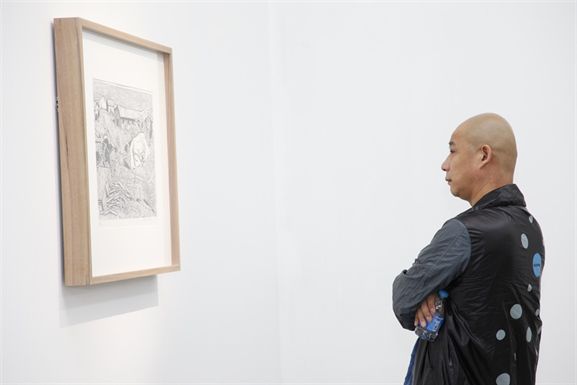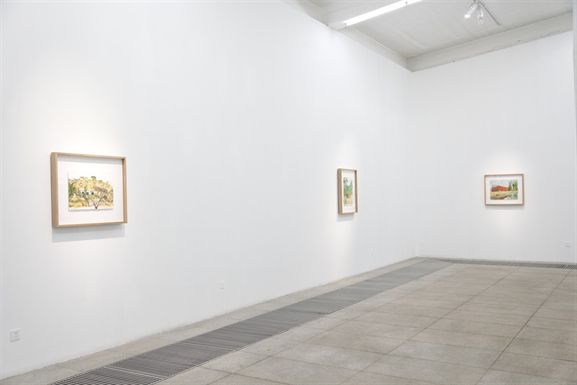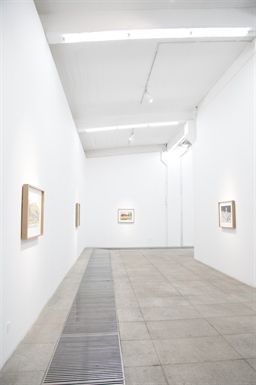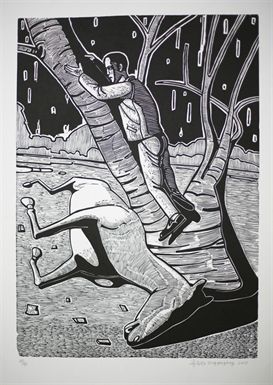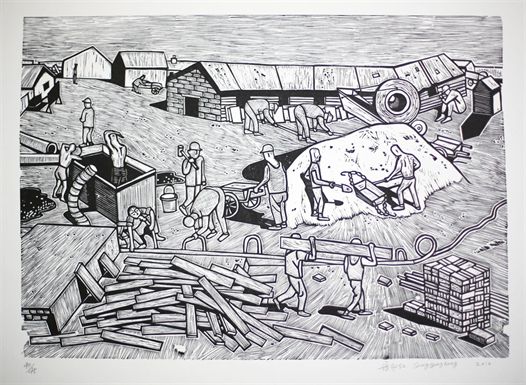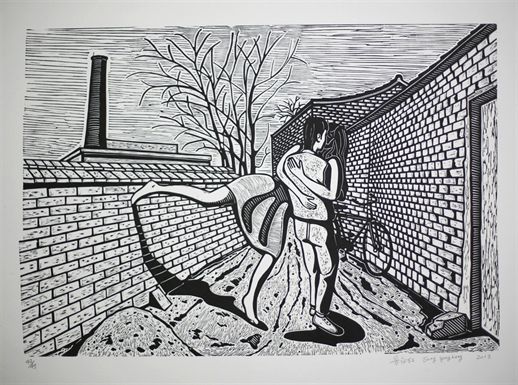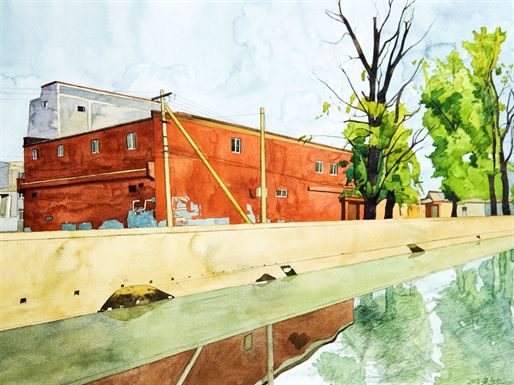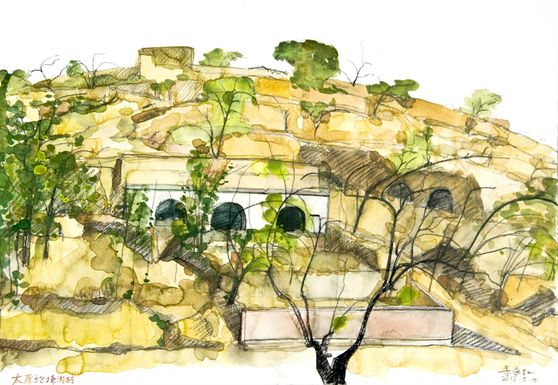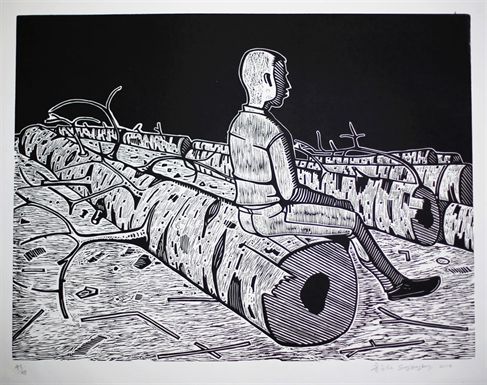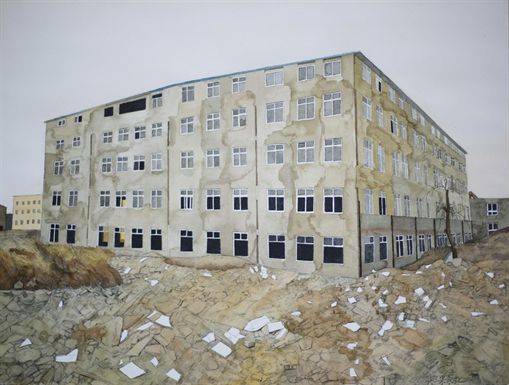Drilling wood for water - Song Yonghong
Sep 15 - Oct 15, 2013
Sep 15 - Oct 15, 2013
Press Release
White Box Museum will host Song Yonghong’s works exhibition - "Drilling wood to get water: Song Yonghong". The exhibition is planned by the critics Duan Jun, and Song Yonghong’s ten works created in last two years will be on display, which includes five woodcuts and five watercolors. The opening time is September 15, 2013, and will be on until October 15, 2013. The catalog printed along with the exhibition will include Song Yonghong personal narrate about art and life in the 1989-2012, which is a total of twenty thousand words, and has a certain literature value. Song Yonghong studied in the Print Academy of Zhejiang Academy of Fine Arts in the 1980s. 1985, he painted "Public Bathroom" with watercolor; 1988, he created a few copperplate paintings "Unfamiliar Environment"; 1989, he created a lot of oil paintings on canvas, and entered at once in the most important Chinese contemporary artists ranks since 1990s. His woodcut creation undoubtedly has interrupted for a long time. The exhibition's title——Drilling wood for water, implies a wood (woodcut) and water (watercolor). In recent years, woodcut and watercolor again let Song Yonghong find new emotions and feelings. Originally, Drilling Wood is to make fire, but now for water. Maybe giving up the goals set can have unexpected results.
CURATOR: Duan Jun
PRESENTED BY: Sun Yongzeng
EXHIBITION DIRECTOR: Liu Chenya
EXHIBITION COOPERATION: Cao Maochao
ORGANIZER: White Box Museum of Art
OPENING: 4pm, 15th of September (Sunday), 2013
DATE: September 15- October 15, 2013
MUSEUM OPENING HOURS: 10:00- 18:00, Tuesday- Sunday
VENUE: WHITE BOX MUSEUM OF ART, 798 Art Dist., NO.2 Jiu Xianqiao Road, Chaoyang Dist., Beijing, China
T: +86-10-5978 4800
Website: www.798whitebox.com
Curator Article
In Song Yonghong’s paintings, the most favorite is its psychological scenes, melancholy color, and the texture of collapsing images, people’s suppressed but having reached desire, as well as people’s loneliness and desolation in the scene. Of course, the formation of these traits is closely related to his experience and personality. Song Yonghong's character is very colorful—he more show his humor, flyness, and sensibility in front of people, so many people with a real character like him very much, but in fact he always feel individual loneness in his own life.
His brother—Song Yongping had written an article "Thirty years past in flash". In that, and he recall Song Yonghong’s pain boyhood, which makes people moved. In the early 1970s, Song Yonghong often played truant and wandered around. Once his father was informed to lead him away for he was detained by the police station. As a soldier, his father felt shameful, and then kicked him a few meters away, which lead Song Yonghong’s viscus bruise. Afterwards, his father seemed to feel apologetic and bought him a unique toy in his lifetime: a small iron tank and a bag of 100 firecrackers. Song Yonghong moved for a long time for his father’s small action, showing his desire for father love. Later, Song Yonghong have painted toys in his own works—although he bought for his daughter, it could be traced back to his father’s guilt in love.
The loneliness and desolation in art, is not only from Song Yonghong’s feelings of life and reality, but also his doubtful or suspicious attitude to the creation. Well, Song Yonghong always remained this suspicion in his artistic career. Since he finished the solo exhibition "Searing Reality" in the Han Art TZ Gallery in 1995, he has begun to doubt about his own creative state and future direction, and he knew he was no longer to feel the reality like before. If he wants to find new emotions in the future, he must constantly defamilize the object, even himself. Just like the title “Drilling wood for water", originally, drilling Wood is to make fire, but now for water. Maybe giving up the goals set can have unexpected results.
In recent years, woodcut and watercolor make Song Yonghong find new emotions and feelings again, at least Song Yonghong feel creating woodcuts and watercolors is very in tune with his current state of mind. For him, the woodcut and watercolor is a reliable and definitely not external language. Song Yonghong studied in the Print Academy of Zhejiang Academy of Fine Arts in the 1980s. 1985, he painted "Public Bathroom" with watercolor; 1988, he created a few copperplate paintings "Unfamiliar Environment"; 1989, he created a lot of oil paintings on canvas, and entered at once in the most important Chinese contemporary artists ranks since 1990s. His woodcut creation undoubtedly has interrupted for a long time. Recently the woodcuts he created seem not to be calm—characters and scenes seem isolate from the representation. Song Yonghong uses dense thin threads in pear wood plate with neat dense texture. The lines itself and shape sense it builds both could more fully demonstrate subjective emotions and conflicting inner to reveal the character's state of the soul and the nature of the scene.
Woodcut certainly obtained some results in the 20th century, which is with left-wing woodcuts and Yan'an woodcut as the representation, but it led to the woodcut is still troubled by the fighting ghost so far, as if the woodcut is more suitable as spears and daggers, and has so-called reality, militancy and revolutionary innately. Although we can’t simply judge that left-wing woodcuts and Yan'an woodcut do not contain personal emotions, we also can’t deny that they are mainly for needs of age and society. Song Yonghong’s woodcuts, however, are almost completely from the individual demands. Song Yonghong is not going to use sharp blade to deal with the tenacious woodcut, what he wants is just to express themselves with woodcuts without roughness and angry.
Song Yonghong’s paintings, no matter the oil paintings, woodcuts or watercolors, always have an ineffable visual. He also finds that: “Art is just ultimately to convey the information by the images. Certainly, we can express clearly in words, then why do it again through visual. Its visual irreplaceability is the reason why art exists. "
Watercolor, for Song Yonghong, has the nature of a sketch, and is never be independent, which is as the supplementary media of his oil paintings. In Song Yonghong's paintings, there is a sense of stagnation just as everything in his paintings could stagnate briefly, while prints and watercolors have not these feelings. Of course, Song Yonghong did not paint the watercolor thoroughly, and he did it for restraint.
1996, Song Yonghong said:"For many years, I always want to escape tension from certain situation to look for possible loose feeling, but I find it is almost a delusion, because any kind of escape means powerless grip on reality." Compared with his oil paintings, although Song Yonghong ‘s watercolors look more relaxed, it not means an escape from reality or is helpless, because the watercolor, for him, is not only a kind of painting used to perform landscape. In some watercolors, Song Yonghong depicts urban fringe. Compared with the bustling city or the lonely countryside, he thinks urban fringe, where is full of building sites, rubble, and ruined walls, contains a personal more complex desire. The humble houses and exterior walls of factory building both show the power of force. Song Yonghong painted them as if they are cages, and by matching withered trees, the surrounding environment becomes a cue, prompting the environment’s touch on human. The scenes Song Yonghong chooses all are useful, for he knows today's world is full of turmoil, and most of them are useless information.
Song Yonghong painted an intimate hotel room interior in watercolor series—a bed, two pillows, and the shadow of two wall lamps casting on the wall. July 23, 2009, Song Yonghong excerpted Tsion Avital’s words in "ART VERSUS NONART": “what the culture cares is not any individual's personal experience, unless those experiences are expressed in a public language, and also are socially relevant in the way. Only at that time, the expression of these experiences is no longer a private matter of the artist or poet, but become a part of the cultural heritage, which are public. “So, Song Yonghong doesn’t want his expression of personal experience only is artists’ private matter.
However, we can’t ignore Song Yonghong operate on the art itself because his intimate psychological factors in painting, just as Freud focused on excavating the smiles and characters’ dramatic combination in Leonardo painting so that he ignored the advance in the field of anatomy, and chiaroscuro in those years. The point we should focus on in Song Yonghong’s paintings is the perspective. In recent years, he puts a lot of energy into this aspect in his oil paintings, woodcuts and watercolors. The perspective in his works is peculiar. It not only makes the reality to be unrealistic, but also be orderly. Song Yonghong sets aside a space for the viewer and the creative subject through perspective, and develops it to a location to easily observe all the happened things in the painting. So all secret things are exposed in the front of the viewer and the creative subject, and the viewers and creators go into hiding. Finally, the reality vividly turned into visual slaughterhouse exposed completely.
Imagery is not only the reason Song Yonghong created oil paintings, but also the motives for woodcut and watercolor. Just as Li Xianting said: "The symbolized language models rely on realistic feelings. And the concretization he used is not with rational sign or symbolic concretization, but with sensuous concretization related with the life experience." In other words, Song Yonghong’s imagery is experienced, psychological, sensuous reality that Song Yonghong imagined, is the fantastic reality formed by defamiliarizing the concretization, but is not reality itself.
The artists, who had achieved scores in 1990s, could feel clearly that the time today is not the same with the 1980s and 1990s, where there was a lot of passion, impulsion, and blindness Song Yonghong thinks. Many years later, what he never deviated is his expression has always been around his confusion about life, existence and society and the confliction in heart.

